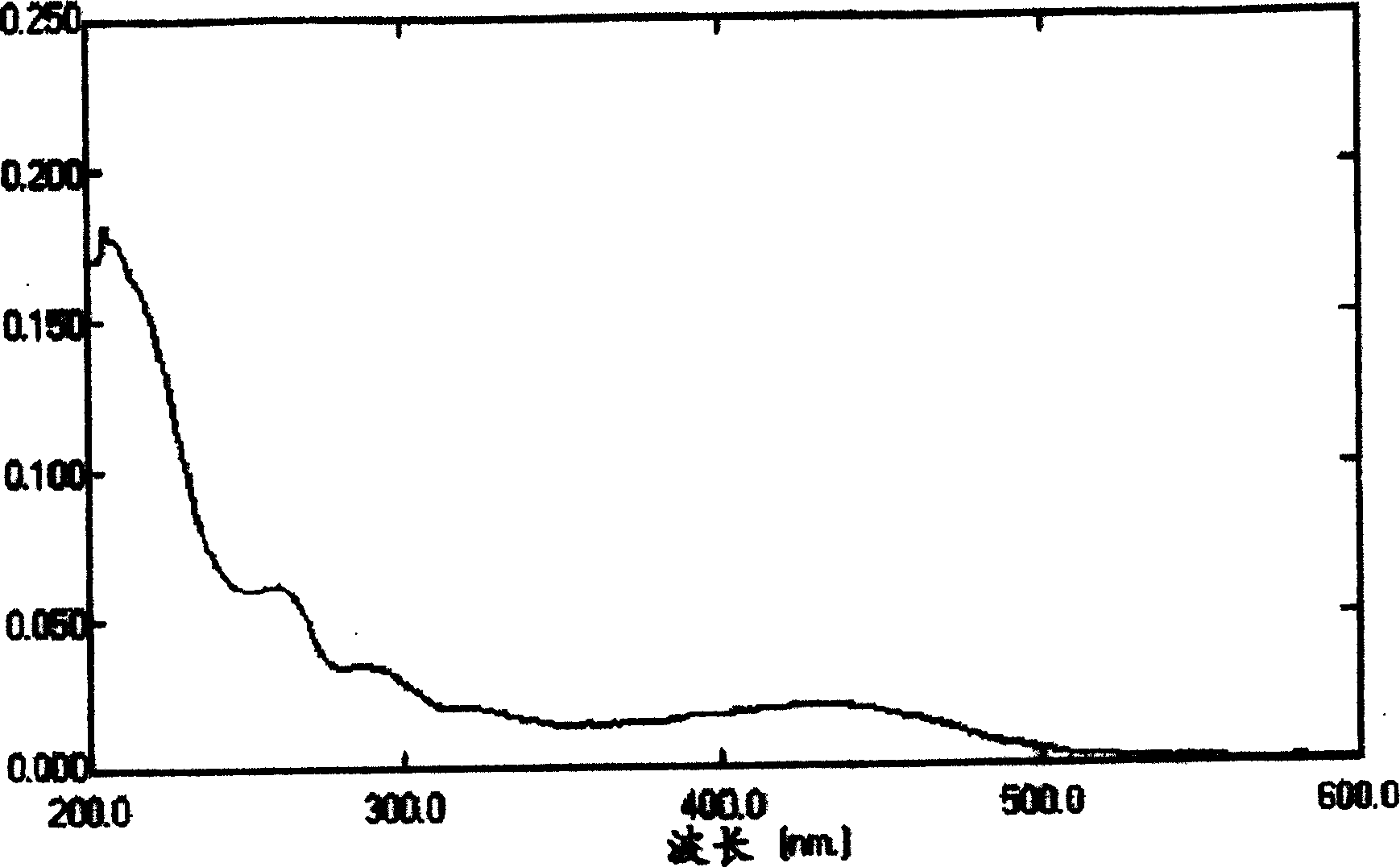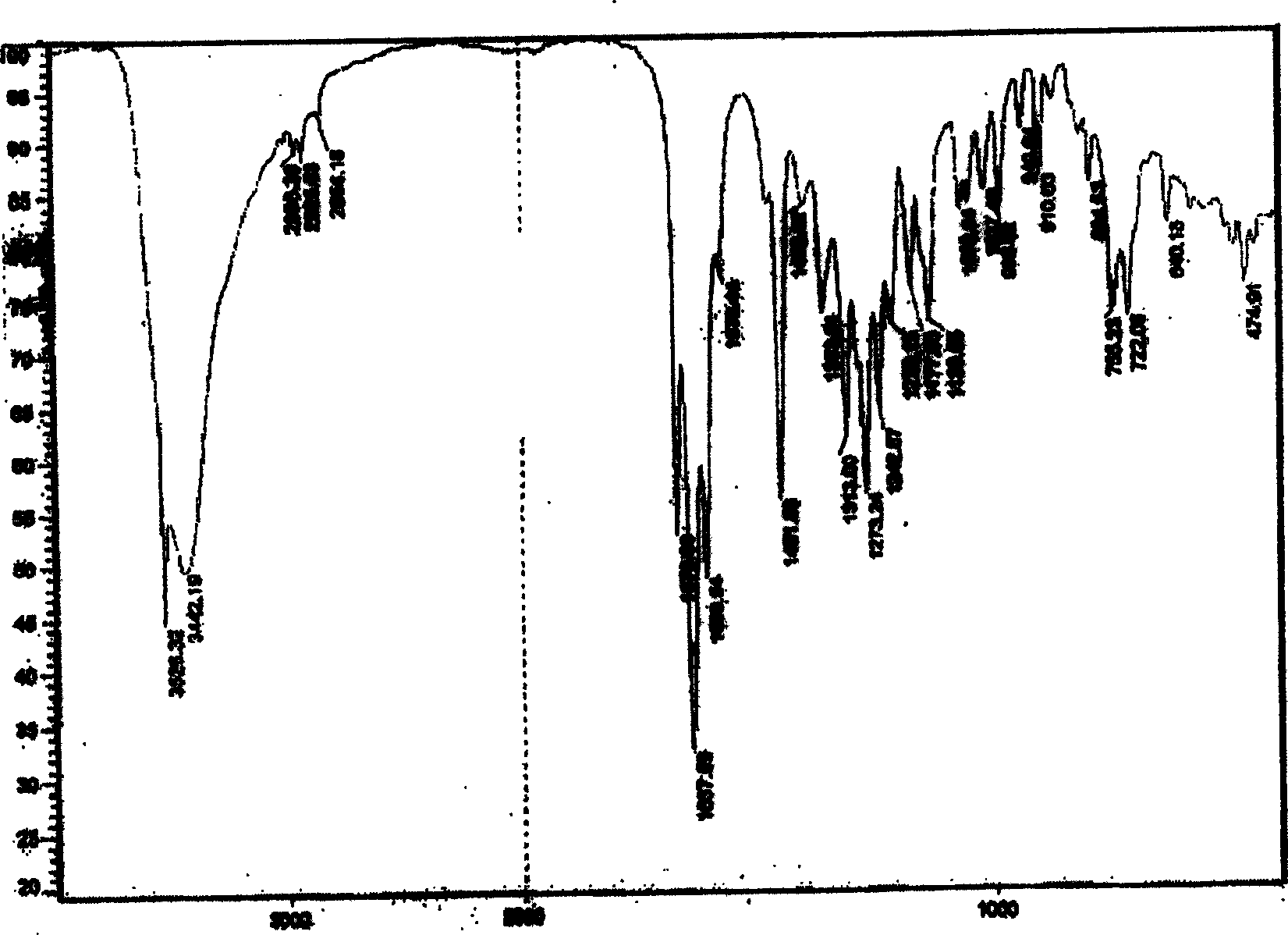Pterocarya stenoptera quinone, its preparation and use
A use and compound technology, applied in the field of maplequinone and its preparation, can solve the problems that have not been reported in the literature on the separation of natural quinone compounds
- Summary
- Abstract
- Description
- Claims
- Application Information
AI Technical Summary
Problems solved by technology
Method used
Image
Examples
Embodiment 1
[0032] Example 1. Extraction, separation and purification of compound I
[0033]
[0034] Compound I
[0035] Take the dry stem bark (3.5 kg) of Tokyo Maple Populus and pulverize it, soak it in 10 liters of 60% ethanol at room temperature for 6 days, filter the aqueous ethanol solution, and repeat the same extraction 8 times. The combined extracts were concentrated under reduced pressure to contain no ethanol (about 2 liters), extracted four times with an equal volume of chloroform, the combined chloroform extracts were concentrated and dried to obtain 10.4 g of chloroform extracts.
[0036] Take 10.4 grams of chloroform extract, dissolve it with an appropriate amount of chloroform, add 10 grams of thin-layer chromatography silica gel G to mix the sample, use 194 grams of silica gel H to dry the decompression column, and use chloroform→methanol gradient (100:0→1:1) Separation by elution chromatography yielded 34 fractions. Each fraction was subjecte...
Embodiment 2
[0072] Embodiment 2. The biological activity test of compound I
[0073] Experimental samples and experimental methods
[0074] Preparation of the tested sample solution
[0075] Take the pure compound I isolated and refined in the above Example 1, accurately weigh an appropriate amount, prepare a 10 mg / ml concentrated solution with methanol, and properly dilute as required for activity testing.
[0076] Cell Lines and Cell Culture
[0077] The mouse breast cancer tsFT210 cell line was used for the activity test, and the cells were subcultured in RPMI-1640 medium containing 10% FBS at 32° C. in an incubator filled with 5% carbon dioxide.
[0078] Flow Cytometry Test Method
[0079] Take the tsFT210 cells in the logarithmic growth phase, and use fresh RPMI-1640 medium to prepare a density of 2×10 per ml 5 The cell suspension of each cell was inoculated in a 24-well plate at 0.5 ml per well, and 5 microliters of sample solutions of different concentrations were added to each w...
PUM
 Login to View More
Login to View More Abstract
Description
Claims
Application Information
 Login to View More
Login to View More - R&D
- Intellectual Property
- Life Sciences
- Materials
- Tech Scout
- Unparalleled Data Quality
- Higher Quality Content
- 60% Fewer Hallucinations
Browse by: Latest US Patents, China's latest patents, Technical Efficacy Thesaurus, Application Domain, Technology Topic, Popular Technical Reports.
© 2025 PatSnap. All rights reserved.Legal|Privacy policy|Modern Slavery Act Transparency Statement|Sitemap|About US| Contact US: help@patsnap.com



